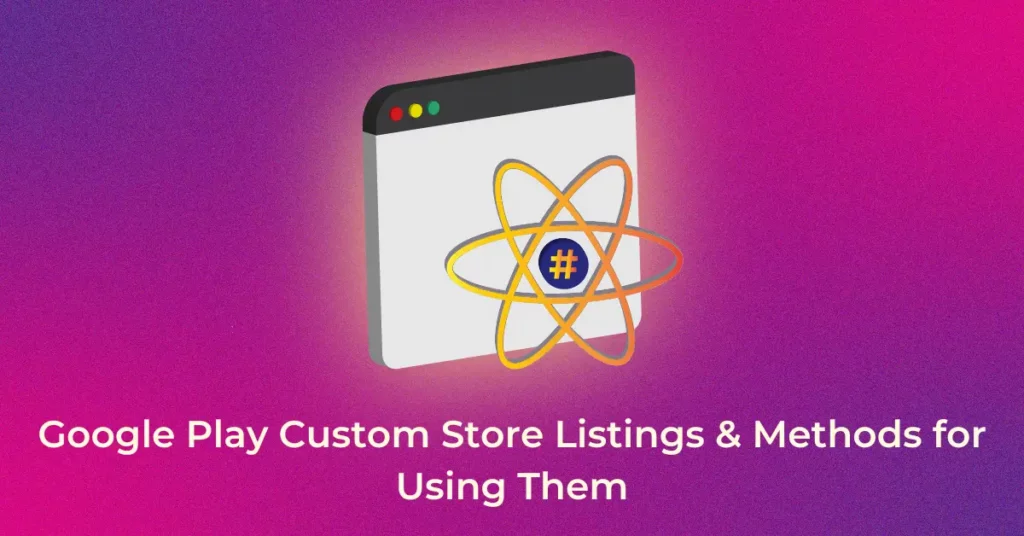Google Play Custom Store Listings are a powerful feature for app developers and marketers looking to personalize their app’s appearance in the Google Play Store. By tailoring your app’s listing based on audience, location, or other factors, you can significantly improve user engagement, conversion rates, and even app downloads. In this guide, we’ll explore what custom store listings are, their benefits, types, and how to set them up effectively.
What Do Custom Store Listings Do?
Custom store listings allow you to show different versions of your app’s Google Play listing to various audience segments. Instead of presenting the same information to every user, you can tailor the messaging, visuals, and features to resonate with specific groups.
For instance, if your app has features catering to different countries or regions, a custom store listing lets you highlight relevant details to users in each location. This makes your app more appealing and relevant, leading to higher conversion rates.
These listings can be customized based on factors like:
- User location
- App installation state (new users vs. existing users)
- Search keywords
- Google Ads campaigns
Custom Store Listing Benefits
Using custom store listings offers several advantages for app developers and marketers:
1. Improved User Relevance
By personalizing your listing for different audiences, you can make your app more relatable and appealing. For example, highlighting local festivals or region-specific features can enhance user interest.
2. Higher Conversion Rates
When users see a listing tailored to their preferences or needs, they are more likely to download the app. A well-optimized custom store listing can boost conversion rates by up to 30%.
3. Better Campaign Performance
For apps promoted through Google Ads, custom store listings help align the landing page with ad content. This consistency improves user experience and reduces bounce rates.
4. Localized Marketing Strategy
Custom store listings are ideal for strategies to increase app downloads in different countries or regions by addressing specific cultural, linguistic, and functional preferences.
Types of Custom Store Listings and Use Cases
Google Play offers several types of custom store listings to suit varying marketing strategies. Here’s a closer look at each type and how you can use them effectively.
1. Country-Specific Custom Store Listings
Custom store listings can be tailored for specific countries to highlight localized features, language preferences, or region-relevant promotions.
Use Case:
A fitness app may promote summer workout plans in one country while highlighting winter sports in another.
2. Custom Store Listings by Install State
These listings allow you to create different experiences for new users, existing users, or users who have uninstalled the app.
Use Case:
- For new users: Emphasize app features and first-time user benefits.
- For existing users: Highlight recent updates or premium features.
- For users who uninstalled: Showcase what’s new to encourage reinstallation.
3. Custom Store Listings by Google Ads Campaign
If you’re running a Google Ads campaign, you can create store listings specifically tailored to match the ad’s content.
Use Case:
An e-commerce app promoting a holiday sale through Google Ads can use a custom store listing to reinforce the sale’s details, ensuring a seamless ad-to-app journey.
4. Custom Store Listings by Search Keywords
With this option, you can optimize your store listing to target specific search keywords, ensuring your app appears more relevant to potential users.
Use Case:
A language learning app targeting keywords like “learn Spanish” or “language practice” can emphasize these features in its custom listing to attract the right audience.
How to Create a Custom Store Listing in Google Play Console
Setting up a custom store listing in the Google Play Console is straightforward. Follow these steps to create one:
- Log in to Google Play Console: Access your developer account and navigate to the “Store Presence” section.
- Go to Custom Store Listings: Under “Store Presence,” select “Custom Store Listings.”
- Create a New Listing: Click on “Create Custom Store Listing.” Provide a unique name for the listing to help identify its purpose (e.g., “Holiday Sale Listing”).
- Define the Target Audience: Specify the criteria for the listing, such as:
- Location
- Install state
- Keywords
- Google Ads campaign
- Customize Content: Tailor the following elements to fit your target audience:
- App description: Write engaging and relevant copy for your audience.
- Screenshots and videos: Highlight features and benefits that resonate with the user segment.
- Title and subtitle: Optimize for SEO by including relevant keywords.
- Save and Publish: Review your custom listing and ensure all elements are optimized. Once ready, publish the listing.
By using these steps, you can effectively leverage custom store listings to boost engagement and conversions on Google Play.
Conclusion on Custom Store Listing
Custom store listings in Google Play offer a unique way to optimize your app’s presence and cater to diverse audiences. Whether it’s tailoring content for specific countries, targeting keywords, or aligning with ad campaigns, these listings provide a flexible and effective solution to enhance app visibility and engagement.
As competition in the app store continues to grow, leveraging custom store listings Google Play is essential to stand out and attract the right users. Combined with other techniques like What Is ASO and focusing on critical app ranking factors, custom store listings can be a game-changer for your app marketing strategy.
Start using Google Play custom store listings today and see the difference it makes in your app’s performance!
Popular Searches
How useful was this post?
5 / 5. 1














